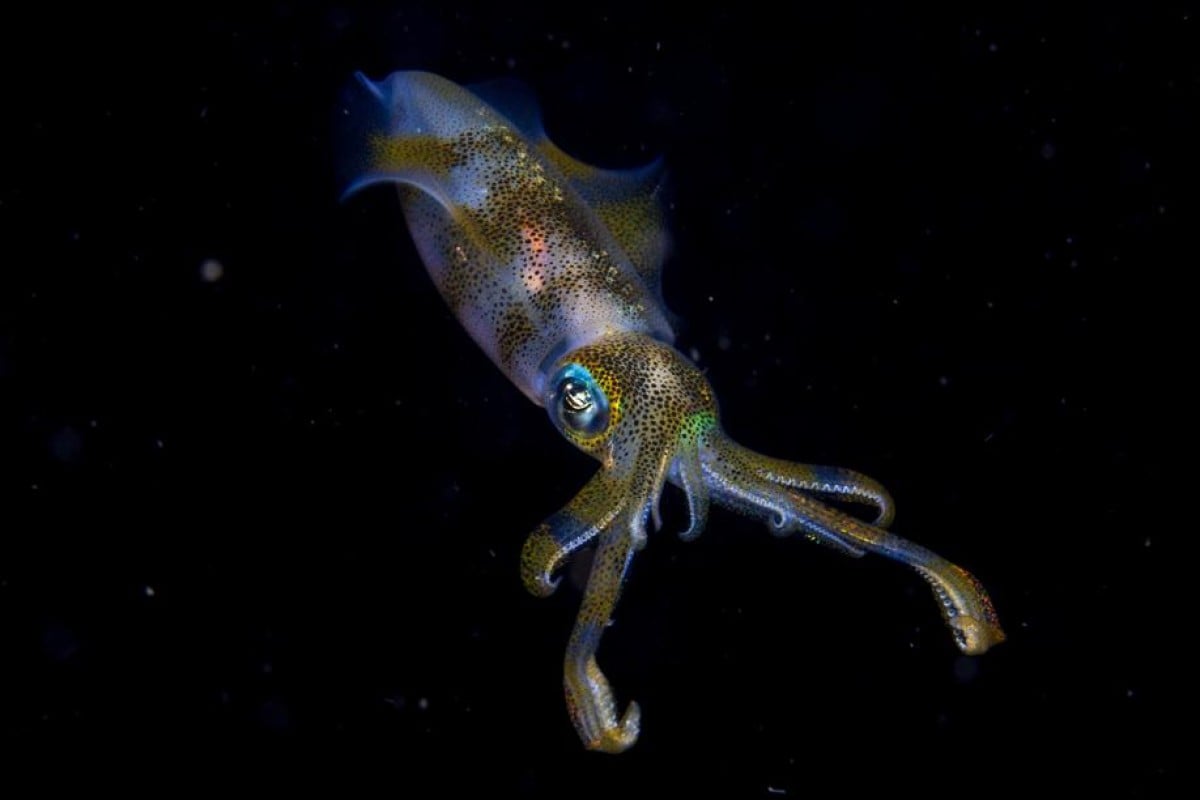
Young Wildlife Photographer of the Year 2019 says capturing marine animals on camera is easy - if you can dive
He just won one of the biggest photo competitions in the world, hosted by Britain's Natural History Museum, but Cruz Erdmann tells us he only recently picked up a camera
 Cruz’ winning shot in all its multicoloured glory.
Cruz’ winning shot in all its multicoloured glory.Last March, when 14-year-old scuba diver Cruz Erdmann picked up a professional camera for the first time, little did he guess that in less than a year, he would win one of the world’s most prestigious photography competitions.
Born in Bali, the teen photographer now lives in New Zealand, and with marine biologists as parents, it’s not surprising that he has been diving for years.
“I’ve been scuba diving since I was seven, and I’ve had a lot of experience underwater, so picking up a camera is basically documenting what I’ve been seeing for the past seven years,” says the Kiwi teen.
He was recently named the 2019 Young Wildlife Photographer of the Year, an award organised by the Natural History Museum in Britain that is widely regarded as one of the most prestigious in wildlife photography.
Unlike last year’s winner, Skye Meaker, who Young Post interviewed in January, Cruz is not a seasoned photographer. What’s astonishing is that he hadn’t taken a single shot on a professional or semi-professional camera until last year.
“I first learned how to use an underwater camera in March 2018, in the Raja Ampat Islands [a famous and remote diving hot spot], in Indonesia,” says Cruz.
Check out some more of Cruz' amazing underwater shots in our gallery
“I hadn’t done any photography growing up, and I don’t have a phone, either!”
While shooting images of marine animals might seem complex, Cruz says it’s actually easy – as long as you’re skilled at diving. “Underwater photography is essentially positioning the light and pressing the button without adjusting many settings – it’s not hard if you’ve been diving for a while,” he says.
“The most important thing is buoyancy [the ability to control your position underwater], and I already knew how to do that, so I just learned the basics of camera settings and how to use the gear, from my Dad.”
Hong Kong Instagram account SurrealHK shows the city in a whole new light
Speaking from experience, he says there is no perfect setting, or an auto setting you can use on an underwater camera.“Settings depend on how artistic you want to be,” he says.
“For the winning photo, I used a 100mm macro lens, which is designed to photograph things that are 30cm or smaller; the flash was a single large flash attached to an arm extension that illuminates things within 1 square metre. Then I used a relatively fast shutter speed, at 1/125 seconds, as well as an aperture of f/29, which gives the photo more depth; and last but not least, an ISO of 200.”
Unlike taking selfies and travel photos, one of the biggest challenges with shooting underwater is lighting, which decreases the deeper you go. Cruz says using a flashlight, or a light strobe, is necessary for taking photos in situations with little to no light, like the situation he found himself in when he shot his award-winning image, Night Glow. The photo reveals the wonderful colours and intricate details of a squid floating in the sea at night.
“With a flash or a strobe, you don’t have to worry about light, because you’ll have light wherever you are,” he explains, “but if you’re doing wide-angle, underwater photography, you do have to adjust the light a bit more, as you’re more vulnerable to bubbles, as well as the depth of the water,” he says.
To win the award, Night Glow beat more than 48,000 entries from more than 100 countries. Cruz captured the image on a night dive off the coast of North Sulawesi, Indonesia; it was also the first time he’d ever seen a live squid.
Here’s what Theo Bosboom, a professional nature photographer and member of the award’s judging panel, had to say about Cruz’ stunning picture.
“To dive in the pitch dark, find this beautiful squid and to be able to photograph it so elegantly, to reveal its wonderful shapes and colours, takes so much skill. What a resounding achievement for such a young photographer,” Bosboom says.
Ever the perfectionist, Cruz says there are still imperfections in his winning shot. “If you look closely, you can see the backscatter,” he says, referring to places where the light lit up particles of matter floating in the water, between the lens and the subject. “It was very much a split-second moment, and I didn’t have any time to adjust the camera settings.”
Cruz says he’d like to try ice diving in the future. “Unlike cave diving, which I’m absolutely terrified of, the reward of ice diving seems to be [huge],” he says.
“While it is not as rich as the tropics, you get to see large coral fans, sea stars, and all kinds of weird fish.”
His most memorable missed opportunity to date? A trip to the Maldives. “We were overweight luggage-wise going there, so we agreed to split the camera gear between us. My dad was coming in from another field trip, but he was delayed due to bad weather. Without his gear, we couldn’t use the camera at all,” he says.
“And on our first dive there, I saw more sharks and rays than I have on entire trips. There were dozens of sharks that weren’t shy at all and two huge manta rays circling above us – I was really mad because I could’ve taken some really good shots!”
